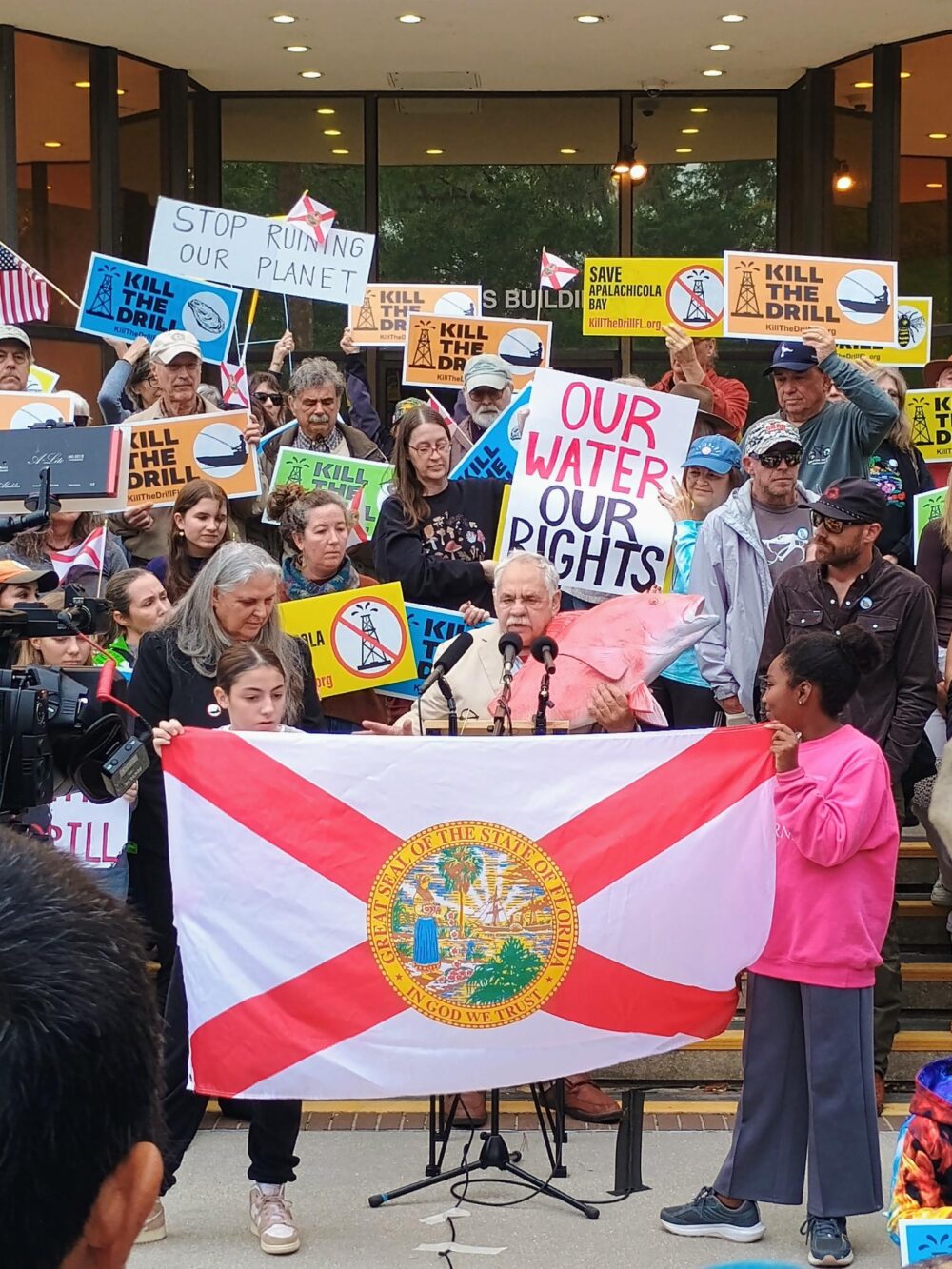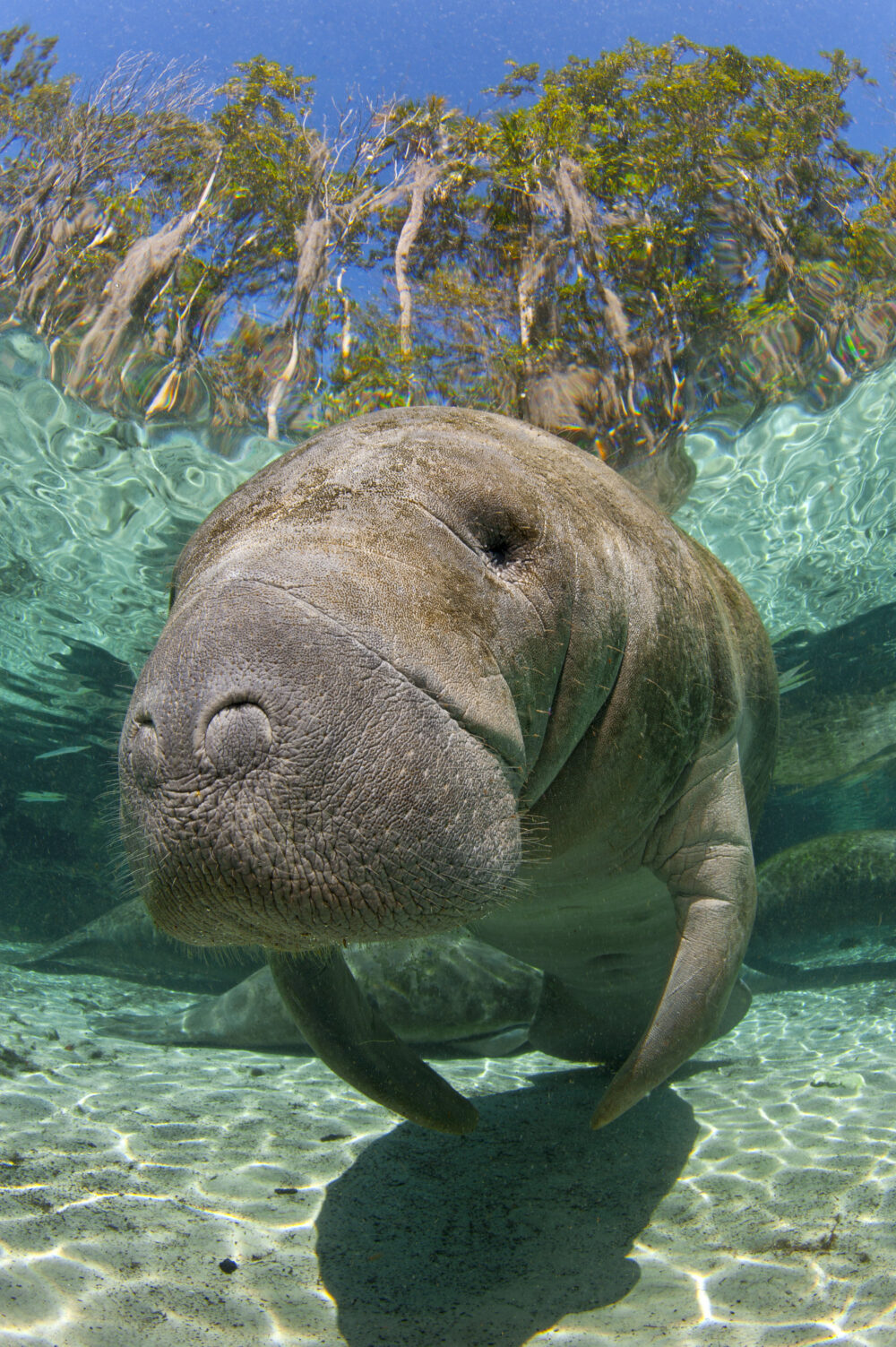We have much more to do and your continued support is needed now more than ever.
Wetlands and Drinking Water: A Natural Connection
When we turn on the kitchen spigot to get a drink of water, we expect to find crystal-clear, cold, pure water. A recent decision by the Supreme Court could change that.
Water flows downhill. From the law of physics follows that anything dumped into water – including pollutants – will eventually wend its way downstream through the interconnectedness of wetlands, tributaries, streams, rivers, ponds and lakes.
For this reason, Congress passed the 1972 Clean Water Act, to set a national standard for protecting all the Nation’s waters including wetlands. For more than three decades, the agencies charged with enforcing these legal safeguards have viewed the aquatic system as a whole, recognizing that the security of drinking water connects to the health and viability of remote wetlands. The benefits to every American from this far-sighted legislation are incalculable.
Since the early nineties, land developers and speculators have unsuccessfully urged Congress to gut the wetlands protections from the Clean Water Act so they could build on critical wetlands without restraint. Legislative fixes that were not achievable by special interest lobbyists in even a conservative Congress are now being achieved by wrong-headed court actions.
On June 19, the Supreme Court threw wetland protections into confusion.
In a contentiously split decision, the court mandated that, for now at least, questions of Clean Water Act jurisdiction over wetlands will have to be thrashed out on a case-by-case basis. One result is certain: The lawyers will have a field day.
This interpretation if left standing, would strip away protections for roughly half the nation’s wetlands and intermittent streams, which either are more subtly connected to free-standing or -flowing waters or are not themselves wet or flowing all year round. The Upper Midwest’s Prairie Potholes come to mind, the seasonally wet and annually vital nesting area for millions of migratory waterfowl.
Dry today, perhaps. But when the flash floods come – as they always do – whatever pollutants have been dumped into those dry channels flow downhill: ultimately into our drinking water and the rivulets that freshen life for an abundance of other living things. Many so-called isolated and temporary wetlands filter pollutants and recharge ground water for millions of household water supplies.
It is also likely that the chief enforcement agencies – the Environmental Protection Agency and the Army Corps of Engineers – will try to write new wetlands-jurisdiction rules based on interpreting the tea leaves contained in the justices’ voluminous opinions. That will mean more litigation.
The solution is obvious. Congress and the White House should reject this recent spat of judicial activism on behalf of developers and work together to pass legislation confirming that Congress meant what it said in 1972: The Clean Water Act applies to all the nation’s waters, not just some. The protections must be a national standard, not a patchwork.
There is no reason why this cannot be done before Congress adjourns. The bill is already written: HR 1356, the Clean Water Authority Restoration Act. It has 158 bipartisan co-sponsors in the House. With leadership and a clear public demand for action, it should soon have a majority.
Passage of legislation to end the confusion caused by the court decision is the strongest available tool. Moreover, the Bush administration is fully aware that the president’s commitment to a legacy of a net gain in wetlands can’t be achieved if the scope of the Clean Water Act’s safeguards is eroded. The administration’s initial reaction to the Supreme Court’s decision also holds promise. “We will explore next steps to further protection and conservation through all available tools,” said Ben Grumbles, the EPA’s top water administrator.
In the meantime, opinion on the Supreme Court is now precariously balanced:
Four justices sided with maintaining the law’s comprehensive jurisdiction. Four justices, led by Antonin Scalia, sided for radically limiting jurisdiction – essentially to only permanently free-flowing or free-standing waters, and those wetlands immediately connected to them.
The ninth Supreme Court justice is the pivot. Moderate conservative Anthony Kennedy sided with the Scalia opinion in returning the cases at hand to the lower courts, for reconsideration, but he indicated that updated enforcement rules, based on a vague “significant-nexus” test, should still allow for broad application of Clean Water Act.
That’s a mighty thin reed on which to place the burden of assuring that we do not return to letting toxins into our waters and licensing the degradation of wetlands simply because they’re not permanently wet or don’t flow directly into free-standing or free-flowing waters.
The threat behind Justice Scalia’s opinion is enormous. It is encapsulated by his statement that jurisdiction is “beyond parody” when applied to “dry arroyos in the middle of the desert.”
Rep. John Dingell, D-Mich., an architect of the Clean Water Act, recognized the threat when he said that the Supreme Court decision displayed a “disdain for Congress” and for the intent that the law protect all America’s waters.
The matter of safe, reliable water supply will become even more critical in a warming world where ground water will be in short supply in many dry regions of the country. The confusion about the National importance of wetland protection must be set aside.
Congress and the president should clearly restate the principle that the Clean Water Act applies to all U.S. waters – those great and those small – all of which together form the foundation of life for us all.





















